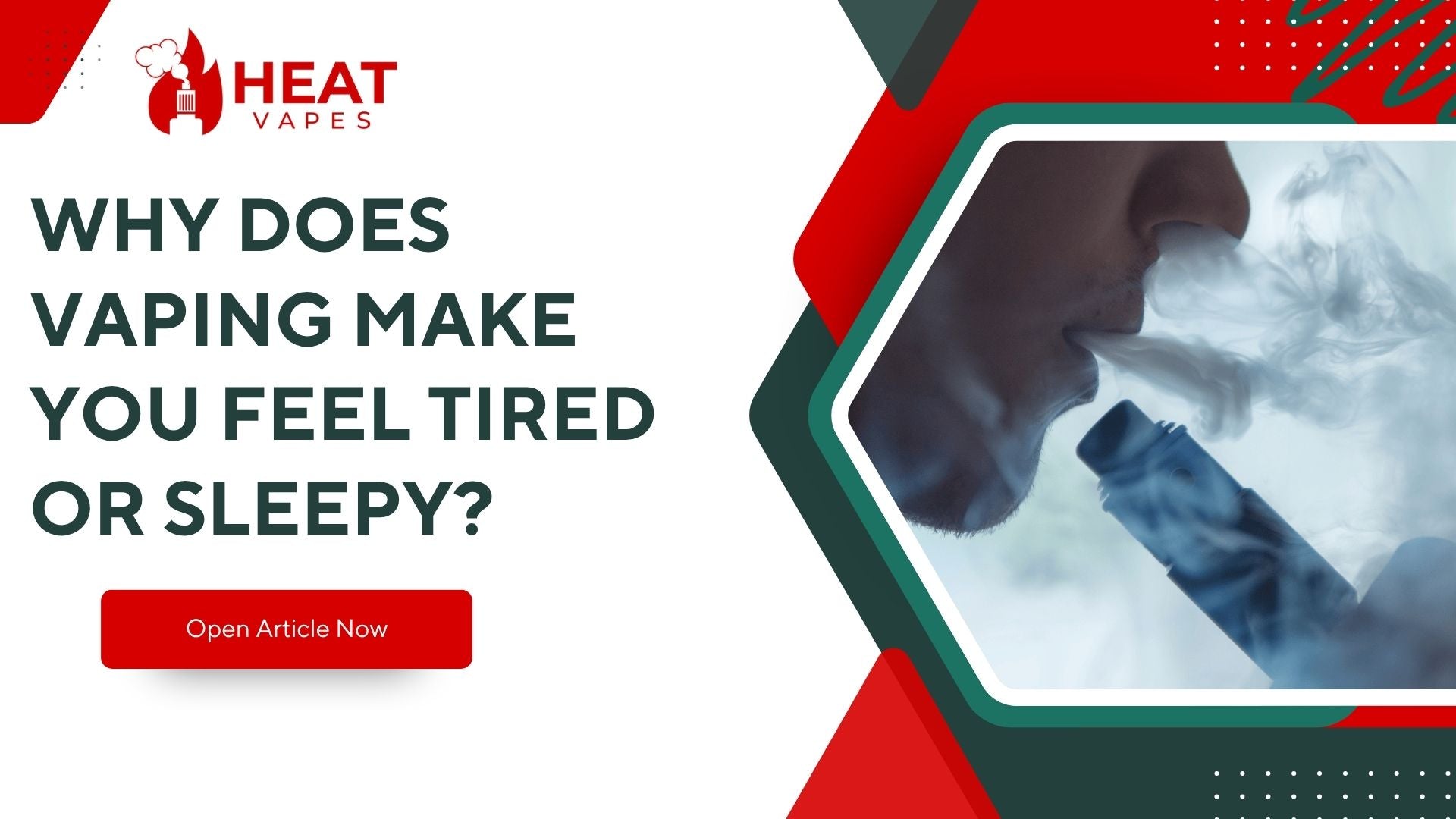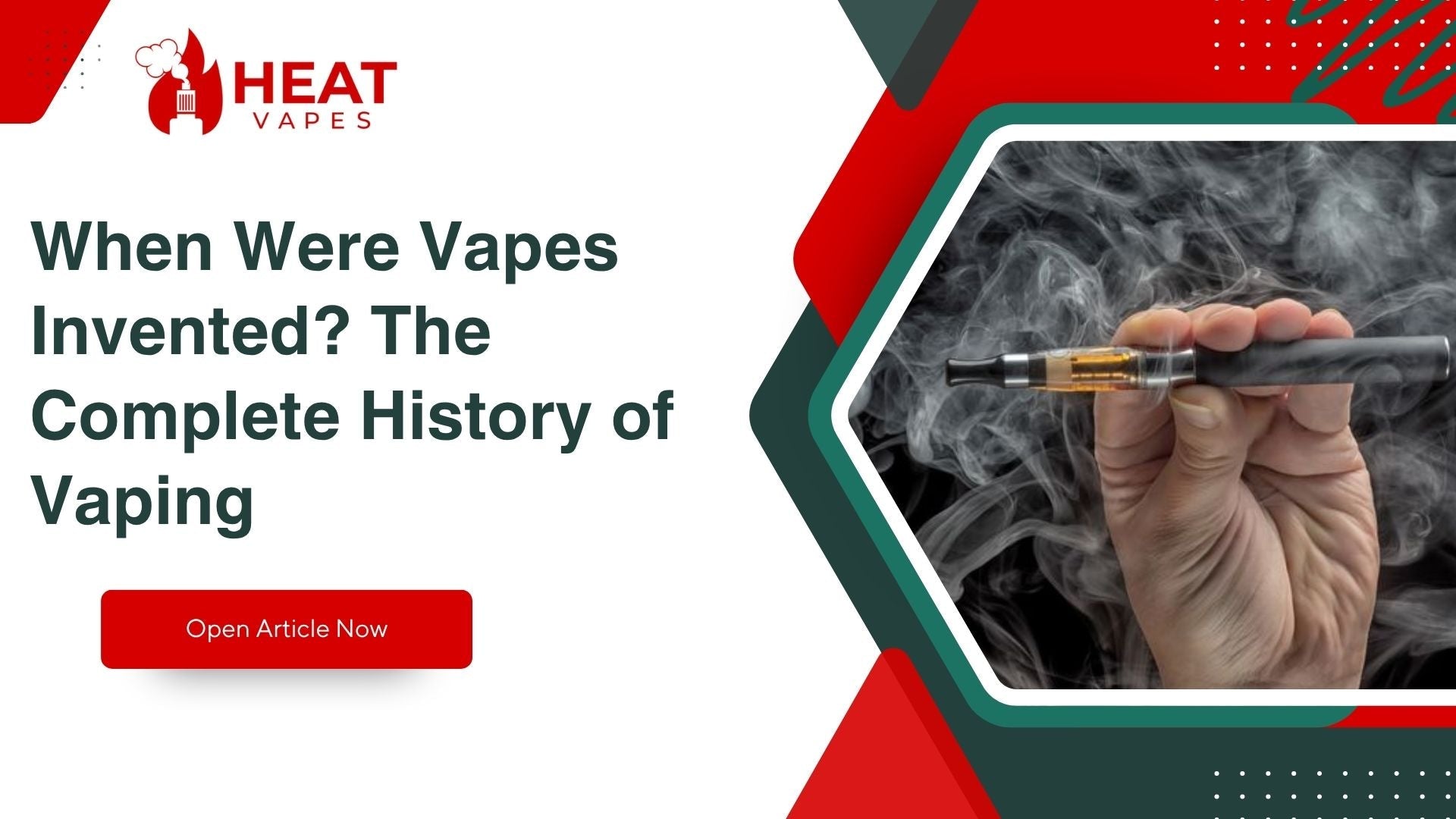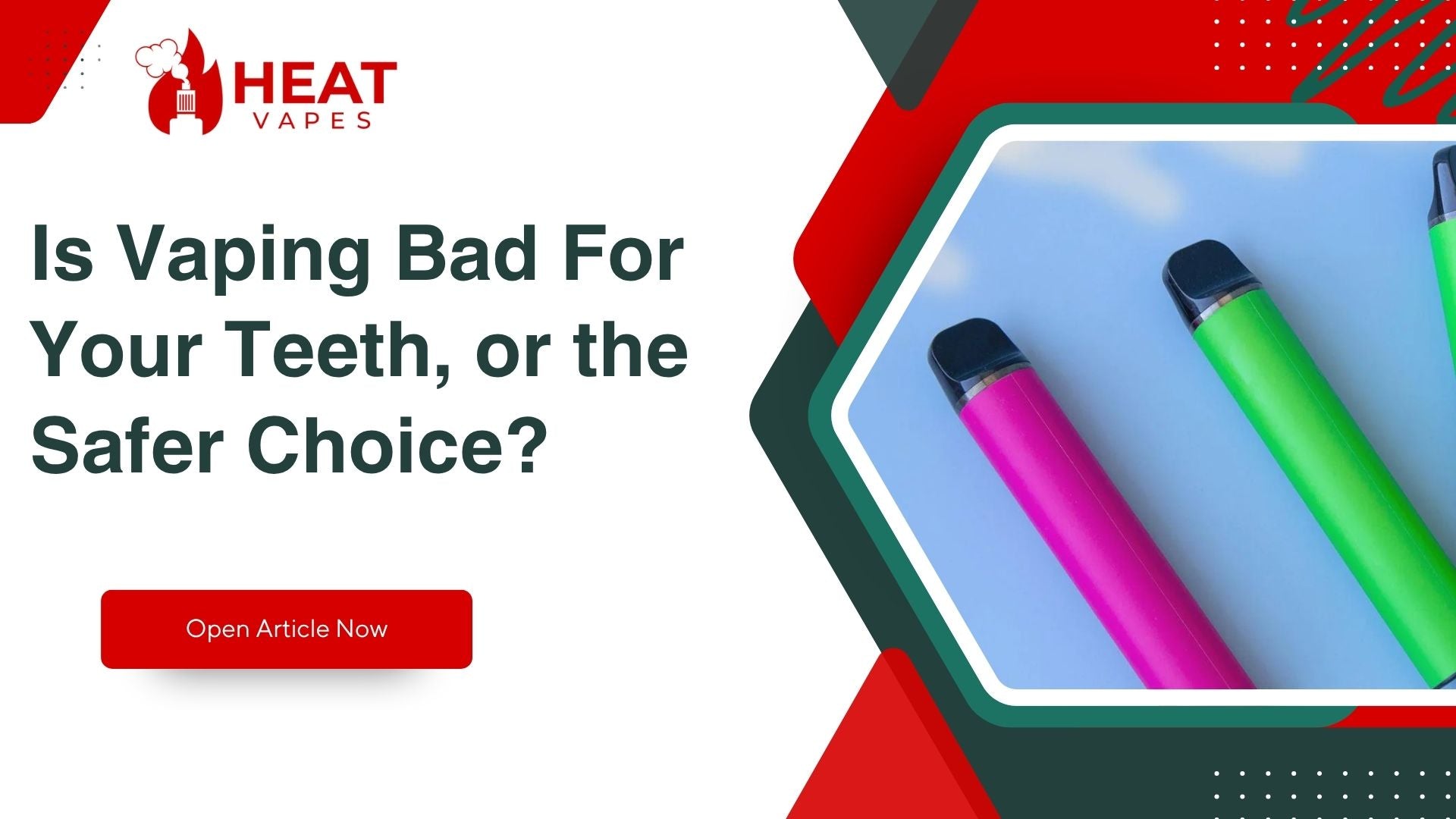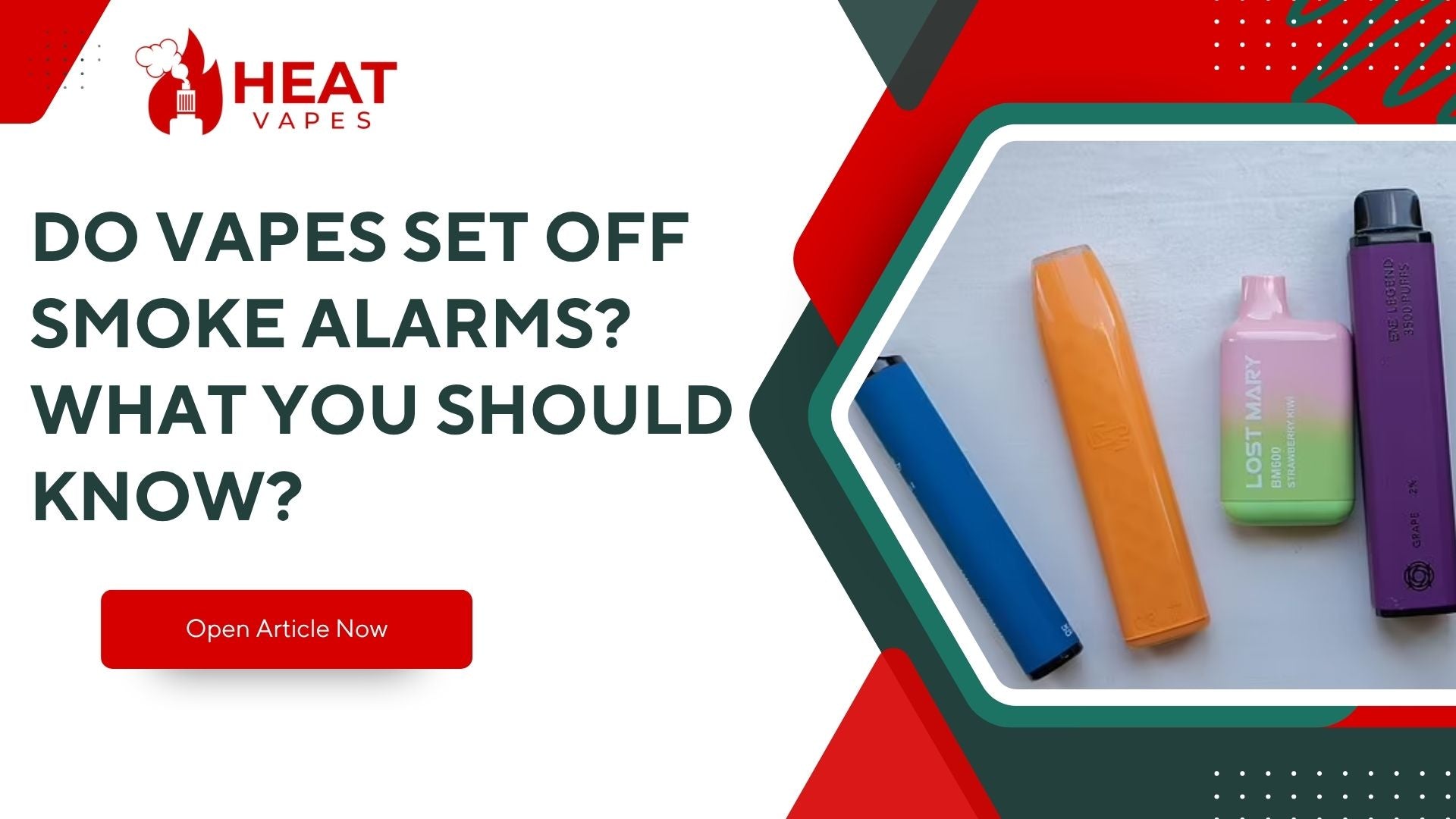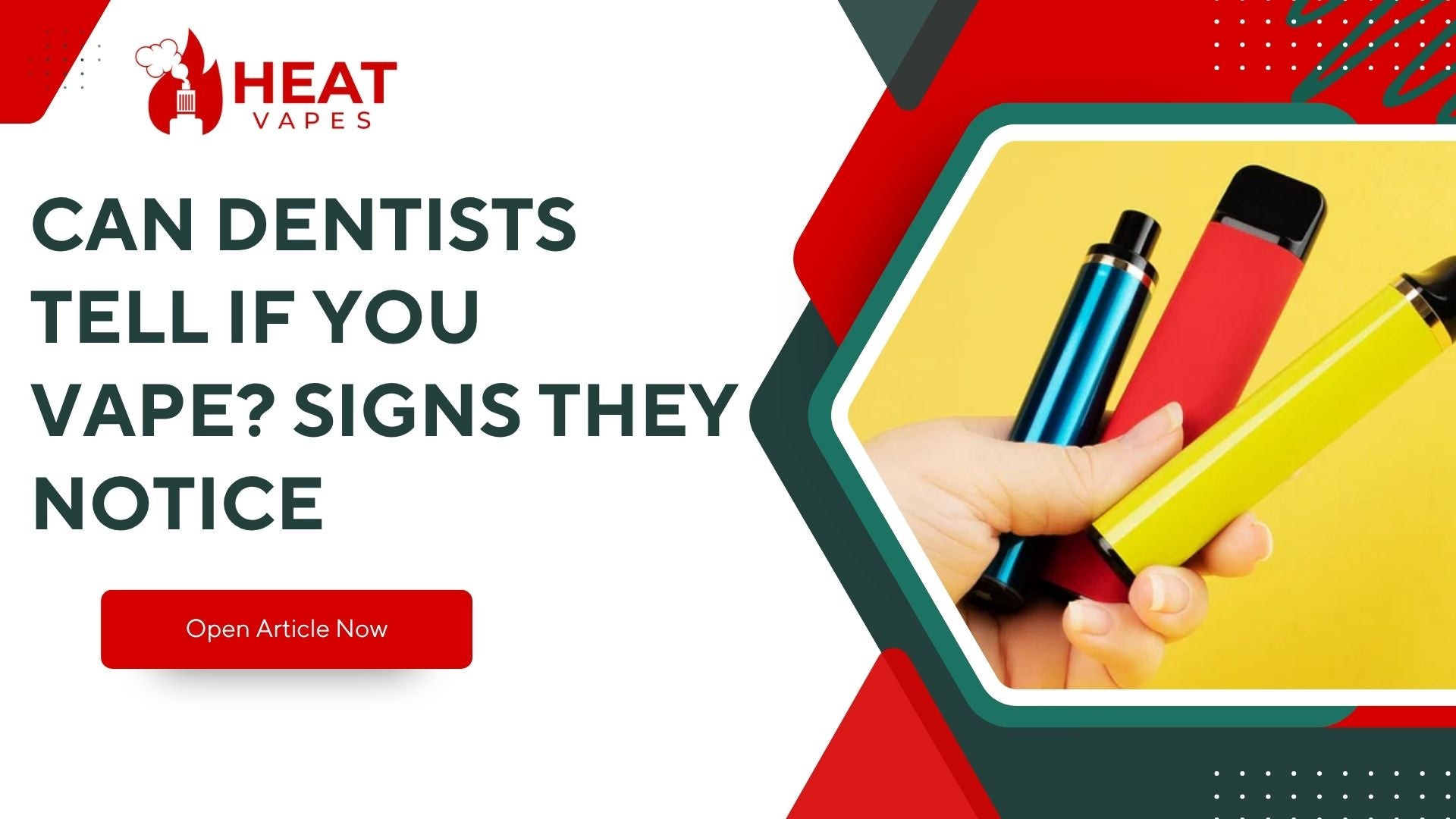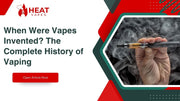
The story of vaping represents one of the most significant innovations in nicotine consumption and harm reduction technology of the modern era. Understanding when vapes were invented requires us to examine a fascinating timeline that spans nearly a century, from early conceptual designs to the sophisticated devices we recognize today. This comprehensive exploration reveals how vaping evolved from a simple idea into a global phenomenon that has transformed smoking culture worldwide.
When Were Vapes Invented?
The Early Conceptual Origins: 1927-1960s
The fundamental concept behind vaping emerged much earlier than most people realize. The first vaping patent was filed by Joseph Robinson in 1927, making this the true answer to when vapes were first invented from a conceptual standpoint.
Robinson's device was designed as a "mechanical butane ignition vaporizer" intended to vaporize medicinal compounds. His patent described a mechanism that would heat substances to produce vapor without combustion, a principle that remains central to modern vaping technology.
However, Robinson's invention never reached commercial production. The device remained a theoretical concept, documented only in patent records, and was never manufactured or marketed to consumers.
Despite this limitation, Robinson's patent established the foundational principles that would later define the vaping industry: heating without burning, vapor production instead of smoke, and inhalation delivery systems.
The next significant development occurred in 1963 when Herbert A. Gilbert patented what he called a "smokeless non-tobacco cigarette." Gilbert's invention represented a more sophisticated approach to the vaping concept.
His device was designed to heat flavored air, creating a vapor that users could inhale as an alternative to traditional cigarette smoke.
Gilbert's patent included detailed technical drawings showing a battery-powered heating element and replaceable flavor cartridges, features that would become standard in modern electronic cigarettes decades later.
Gilbert actively attempted to commercialize his invention, creating prototypes and seeking manufacturing partners throughout the 1960s. Unfortunately, the timing proved problematic.
The cigarette industry was at its peak, smoking was socially acceptable and ubiquitous, and there was minimal public awareness about the health risks associated with tobacco.
Without market demand or investor interest, Gilbert's smokeless cigarette never achieved commercial success, and his invention faded into obscurity for nearly four decades.
The Modern Vaping Era Begins: Hon Lik's Revolutionary Invention
The question of when modern vapes were invented has a definitive answer: 2003. This was the year that Chinese pharmacist Hon Lik developed the first commercially viable electronic cigarette, the device that would launch the global vaping industry.
Hon Lik's invention was not merely a theoretical concept or prototype—it was a functional, marketable product designed specifically for widespread consumer use.
Hon Lik's motivation was deeply personal. A heavy smoker himself, he was devastated when his father, also a lifelong smoker, died from lung cancer. This tragedy prompted Hon Lik to search for a safer alternative to traditional cigarettes. Working as a pharmacist and researcher, he possessed both the scientific knowledge and the personal drive to create something revolutionary.
Hon Lik's design utilized ultrasonic technology to vaporize a liquid solution containing nicotine. The device consisted of several key components: a battery to provide power, an atomizer to heat the liquid, a cartridge to hold the nicotine solution, and a mouthpiece for inhalation.
When a user drew on the device, the battery activated the atomizer, which heated the liquid to produce an inhalable vapor that mimicked the sensation of smoking traditional cigarettes.
The brilliance of Hon Lik's invention lay in its practical application and user experience. Unlike previous concepts, his electronic cigarette was portable, easy to use, and provided smokers with a familiar ritual and nicotine delivery without the combustion of tobacco.
He filed his patent in 2003, and by 2004, his invention was being manufactured and sold in China under the brand name "Ruyan," which translates to "like smoke."
Global Expansion and Commercial Development: 2005-2010
Following its Chinese launch, the electronic cigarette began its international journey. Vapes were introduced to European markets in 2006 and reached the United States by 2007, marking the beginning of vaping's transformation into a global phenomenon.
These early devices, often called "cig-a-likes" due to their resemblance to traditional cigarettes, featured a three-piece design: a battery, an atomizer, and a disposable cartridge pre-filled with e-liquid.
The initial reception was mixed. Smokers looking for alternatives were intrigued by the technology, while health organizations and regulatory bodies expressed concern about the lack of research and safety data.
Despite skepticism, the vaping market grew steadily as word spread through online communities and early adopters shared their experiences with the devices.
During this period, entrepreneurs and innovators began improving upon Hon Lik's original design. The industry saw the development of two-piece systems that simplified the device structure, improved battery technology that extended usage time, and the introduction of refillable cartridges that reduced costs and waste.
Chinese manufacturers dominated production, but companies in Europe and North America began entering the market, each contributing refinements and innovations.
The e-liquid industry also emerged during this era. Early adopters experimented with different nicotine concentrations and flavoring options, moving beyond simple tobacco and menthol varieties.
This experimentation laid the groundwork for the thousands of flavor profiles that would later characterize the vaping market. The components of e-liquid became standardized: propylene glycol (PG) and vegetable glycerin (VG) as base liquids, pharmaceutical-grade nicotine, and food-grade flavorings.
The Second Generation: Tank Systems and Vape Pens (2010-2013)
The evolution of vaping technology accelerated dramatically with the introduction of second-generation devices around 2010-2011.
These devices, commonly called "vape pens" or "ego-style" devices, represented a significant departure from first-generation cig-a-likes. The most notable innovation was the tank system, which replaced disposable cartridges with refillable tanks that held larger volumes of e-liquid.
Tank systems revolutionized the vaping experience in multiple ways. Users gained the ability to select their own e-liquids, mixing and matching flavors and nicotine strengths to suit personal preferences.
The larger liquid capacity meant fewer refills and more convenient daily use. Additionally, second-generation devices featured more powerful batteries that could be recharged via USB, making them more practical and cost-effective for regular users.
The atomizer technology also improved significantly. Replaceable atomizer heads became standard, allowing users to maintain their devices without replacing entire units. These atomizers featured improved coil designs that heated more efficiently and produced greater vapor volume.
The enhanced performance attracted users who desired a more satisfying experience than first-generation devices could provide.
This period witnessed the emergence of vaping as a subculture. Online forums, YouTube channels, and social media communities dedicated to vaping proliferated. Users shared reviews, techniques, modification ideas, and e-liquid recipes.
This community-driven innovation accelerated the technology's development, as manufacturers responded to user feedback and incorporated suggestions into new product designs.
The modding community began during this era as well. Enthusiasts started modifying devices to increase power output, experimenting with different atomizer configurations, and even building their own devices from individual components. This grassroots innovation would directly influence the third generation of vaping devices.
The Third Generation: Advanced Personal Vaporizers and Sub-Ohm Vaping (2013-2015)
Third-generation vaping devices, introduced around 2013, represented a quantum leap in technology and customization. These Advanced Personal Vaporizers (APVs) or "mods" featured variable voltage and variable wattage capabilities, allowing users to precisely control their vaping experience.
Box mods, tube mods, and regulated devices with digital displays became increasingly sophisticated, incorporating safety features, temperature control, and detailed performance metrics.
The concept of sub-ohm vaping emerged as a defining characteristic of this generation. Sub-ohm refers to using atomizer coils with resistance below 1.0 ohm, which requires higher power output and produces significantly larger vapor clouds.
This technique appealed to users who enjoyed the visual aspect of vaping and desired intense flavor and nicotine delivery. The practice necessitated advances in battery technology, coil materials, and airflow design to safely handle the increased power demands.
Rebuildable atomizers (RBAs) became popular during this period, including Rebuildable Dripping Atomizers (RDAs) and Rebuildable Tank Atomizers (RTAs).
These devices allowed experienced users to build their own coils, selecting wire types, coil configurations, and wicking materials to customize performance. The rebuildable market catered to enthusiasts who viewed vaping as a hobby as much as a smoking alternative.
The e-liquid market exploded during this era. Professional e-liquid manufacturers emerged, creating complex flavor profiles and premium product lines. The industry developed quality standards, and many manufacturers began producing e-liquids in certified clean room facilities.
Nicotine concentrations diversified to accommodate different devices and user preferences, ranging from nicotine-free options to high-concentration formulations for low-power devices.
Cloud chasing emerged as a competitive activity, with participants competing to produce the largest vapor clouds. This phenomenon influenced device design, with manufacturers creating products specifically optimized for vapor production.
Competitions, events, and even professional cloud chasing circuits developed, bringing media attention to the vaping community and culture.
The Fourth Generation: Pod Systems and Nicotine Salts (2015-Present)
The fourth generation of vaping began around 2015 with the introduction of pod-based systems, though these devices gained mainstream popularity around 2017-2018. The most influential device in this category was undoubtedly the JUUL, launched in 2015 by PAX Labs.
JUUL's sleek, USB-stick design and innovative use of nicotine salt e-liquid created a new category of vaping devices that appealed to both former smokers and a younger demographic.
Nicotine salt technology represented a crucial innovation. Traditional e-liquids use "freebase" nicotine, which can be harsh at high concentrations. Nicotine salts, created by combining nicotine with benzoic acid, provide smoother throat hit at higher nicotine concentrations, more closely mimicking the rapid nicotine delivery of combustible cigarettes.
This technology made higher nicotine strengths (often 25-50mg/ml) tolerable, allowing pod systems with low power output to deliver satisfying nicotine levels.
Pod systems offered several advantages over previous generations: compact size, simplicity of use, minimal maintenance, and discreet vapor production. Most pod systems feature draw-activated mechanisms, eliminating buttons and settings that might intimidate new users. The simplicity made these devices particularly appealing to smokers seeking straightforward alternatives without the complexity of advanced mods.
The success of JUUL and similar devices dramatically expanded the vaping market. By 2018, JUUL controlled approximately 75% of the US e-cigarette market. This success prompted established tobacco companies to enter the vaping industry through acquisitions and product development.
Altria (parent company of Philip Morris USA) purchased a 35% stake in JUUL for $12.8 billion in December 2018, signaling the traditional tobacco industry's recognition of vaping's disruptive potential.
However, this period also brought increased scrutiny. Concerns about youth vaping intensified as reports suggested rising e-cigarette use among teenagers, particularly with pod-based systems.
The appealing flavors, discreet devices, and social media marketing raised alarms among parents, educators, and public health officials. This led to regulatory actions including flavor restrictions, marketing limitations, and age verification requirements in many jurisdictions.
Disposable Vapes: The Latest Evolution
The most recent development in vaping history is the explosive growth of disposable vape devices, which became increasingly popular from 2019 onward. These single-use devices come pre-filled with e-liquid, pre-charged, and require no maintenance, refilling, or recharging. When the e-liquid or battery is depleted, users simply discard the entire device.
Disposable vapes appeal to different user segments: smokers seeking the absolute simplest entry point to vaping, social vapers who use devices occasionally, and travelers who want minimal hassle.
Modern disposables offer impressive specifications, with some devices providing 3000-7000 puffs per device, far exceeding early disposable models that offered only 200-400 puffs.
The disposable vape market has spawned its own ecosystem of brands and products. Devices now feature mesh coil technology for improved flavor, extensive flavor catalogs, varying nicotine strengths, and even adjustable airflow.
Some manufacturers have introduced rechargeable disposables that can be charged when the battery depletes before the e-liquid runs out, maximizing product utilization.
However, disposable vapes have generated environmental concerns. The single-use nature of these devices creates electronic waste that includes batteries, metal, and plastic components. Some jurisdictions have considered or implemented restrictions on disposable vapes due to sustainability concerns, pushing manufacturers toward more eco-friendly designs and take-back programs.
Regulatory History and Market Impact
Understanding when vapes were invented must include the parallel story of regulatory evolution. Initially, e-cigarettes existed in a regulatory gray area, with many jurisdictions uncertain how to classify these novel products. Were they tobacco products, medical devices, consumer electronics, or an entirely new category requiring specific legislation?
The United States Food and Drug Administration (FDA) first attempted to regulate e-cigarettes as drug delivery devices in 2009, but this approach was challenged legally. In 2016, the FDA established its authority over e-cigarettes by extending tobacco product regulations to include electronic nicotine delivery systems through the "deem rule." This required manufacturers to submit Premarket Tobacco Product Applications (PMTAs) to continue marketing their products.
The European Union implemented the Tobacco Products Directive (TPD) in 2016, establishing comprehensive regulations including maximum nicotine concentrations (20mg/ml), tank capacity limits (2ml), and packaging requirements. Individual European countries supplemented these baseline regulations with additional restrictions.
Canada legalized the sale of vaping products containing nicotine in 2018, having previously allowed only nicotine-free vaping products. Australia maintains some of the strictest regulations, requiring prescriptions for nicotine-containing vaping products, though these regulations are currently under review and debate.
China, where vaping was invented, remained relatively unregulated for years despite being the primary manufacturing hub. In 2019, China announced intentions to regulate the industry more strictly, including online sales restrictions implemented in late 2019.





